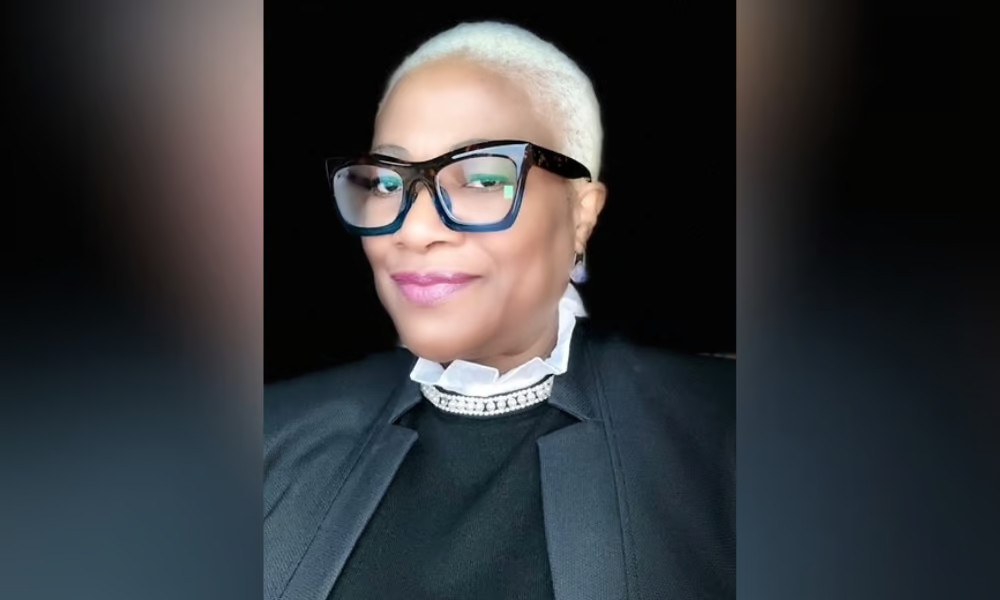A divide has opened between top corporate law firms and their clients. Heather Morse found herself staring at it on her computer screen.
Morse, the Director of Marketing at Greenberg Glusker Fields Claman & Machtinger LLP in Los Angeles, spent 10 months poring over the websites of Fortune 100 and NASDAQ 100 companies looking for the age of their in-house counsel. It was for a marketing presentation with a colleague.
If their age wasn’t publicly available, she’d hunt down the year they graduated from university: Undergrad, because some people go to law school later in life.
She then repeated the exercise with management of the AmLaw 100 companies.
“I’m the geek who sat down with a laptop in the middle of the night looking all this up,” she jokes. “I looked up every single person. I researched every single person.”
Some nights, hunched over her computer, she must have wanted to tear her hair out. But what she uncovered is fascinating, a must-read for law firms everywhere that are tackling the minefield of generational change.
Morse discovered that Gen-Xers – some of whom are by now in their early 50s according to the US definition – were still largely shut out of law firm management. They made up less than 5 per cent of managing partners or their equivalent.
Their clients? Younger.
Of those presiding over the legal spend at Fortune 100 companies, roughly 20 per cent were Gen-Xers, born between the mid-1960s and the mid-1980s.
That jumped to 30 per cent of in-house counsel at the more tech-heavy NASDAQ-listed companies.
“When you saw the data in a table, visually, it was so impactful,” says Morse. “You could see that the law firms were not shifting at the same rate as the client base.
“Whether it’s general corporate America, represented by the Fortune 100, or the NASDAQ, which has a lot more tech companies that skew a little less risk averse, it was so prevalent. There’s a disconnect between what’s going on in law firm leadership versus what’s going on in the client-base leadership. It really shifted our conversation.”
At a time when corporate law firms are struggling under client cutbacks and increasingly scrapping for work, Morse says what she saw persuaded her that the age divide should become part of a firm’s basic client-facing strategies.
“Smart law firms out there are including age as one of the defining measures of diversity. When we’re looking at pulling together a client team, going out to meet with people or putting together panels, writing a client alert – anything that is forward facing – we take great care to make sure the genders are represented and that we’re representing diversity like creed and colour, recognizing LGBTQ. What we are saying is that the generations have to be part of that diversity as well.”
The data that Morse pulled so painstakingly is from late 2013 and comes from American companies and law firms. Are the demographics any different here? Hard numbers are not available, but conversations with a number of people in different law firms suggest not one iota.
Large corporate law firms everywhere are a generational stew. The last wave of Boomers, or those in their mid-50s, is largely eschewing early retirement, staying put to top off bank accounts and successful careers. As senior partners, many are hanging on to clients and billings.
Gen-Xers are poised to step in – the truth is some have been for a decade or more – and can feel the first wave of Millennials, now in its mid-30s, starting to breathe down their necks.
New generations are grinding up against older ones.
Stéphane Teasdale, who practises in the Montréal office of Dentons Canada LLP, identifies himself as a late Boomer. He says one of the challenges is that the groups have sharply differing styles.
“The Gen-Xers want to be officers more quickly than the old generation like me, who are used to being very good soldiers,” he says. “We were very patient and waited for our time of glory. The Gen-Xers are much more impatient and want to get where we are much more quickly.
“So we’ve had to adapt to that reality and make space for them. If we don’t, they’ll leave and go somewhere better suited to what they’re looking for.”
While Gen-Xers, like everyone, have to wait until they meet the firm’s partnership criteria, the moment they do, “they’re very antsy and very enthusiastic and demanding,” Teasdale says. “They feel it’s their due. They worked very hard for it and if they don’t get it, there better be a very good reason or they’ll look somewhere else.”
Teasdale, who chairs his firm’s global franchise and distribution group, says Millennials in their 20s to mid-30s are an entirely different story.
Most work to live, not live to work. They’re happy with a solid six-figure income and genuinely care about things like telecommuting, flex time, pro-bono work and parental leave. Not all care as much about the partner track.
“Millennials are a lot less attached to financial reward,” he says. “They want to be paid their fair share but, compared with previous generations, they’re a lot less attached to the material objects of this world than they are to the quality of the work that they want to do and the position they want to achieve.
“Obviously they don’t want to be underpaid but they’re much more drawn to the quality of the environment, of the relationships and being recognized for their contributions to the success of their firm or their company if they’re in-house.”
Some Baby Boomers, who dominated law firms for the last 30 years, have difficulty with the new mindset, he acknowledges, saying they may perceive it as entitled.
“The workplace has changed. You can’t just dictate and order like you would in the army in the old days. There’s a lot more collegiality and a recognition, especially between the Gen-Xers and the Millennials, of the teamwork spirit. I’m not sure if the teamwork spirit was applied a lot by the previous generations.
“I’m just using my own experience but back in the day when I was a young lawyer in a big firm, the partners really had their own little business and they had their entourage. They just dictated how things were.”
The truth is, when the last wave of Baby Boomers like Teasdale joined large corporate law firms in the 1980s, they were small bugs in the workplace hierarchy. They could forget – or better yet, not even consider – attending conferences, direct client interface and offering their perspective.
“We were just units of production,” is how Kevin Coon of Baker & McKenzie LLP puts it.
But if they worked hard, the Boomers made partner in lockstep with the rest of their cohort. Once admitted, they continued to work hard, championing a work-work-work mentality that saw many at their desk 60 or 70 hours a week, 50 weeks a year. They could reliably be found in the office late into the evening and at some point over the weekend.
Coon, now Managing Partner at his firm, says Baby Boomers have to deal with mindsets that are in many respects “dramatically different” than their own. “All I have to do is walk through my office at any given time to see it.
“The Boomers are in their offices and there’s a very traditional model. The ratio of assistants to partners is high, they’ve had their assistant to deliver the work that they’ve done for the last 20 years.
“And then I have the Millennials leaving the office at certain times — going to work out in the evening, for example. Then they’re back on their laptop at 8 o’clock working through to midnight remotely. The ratio of assistants to the younger lawyers is far lower than it is with the Boomers because they’re practising differently. They’re doing stuff electronically so they don’t need to put it on paper and give it to their assistant who, in turn, puts it in the system — all those kinds of things.
“They also like to work somewhat more collaboratively. If you look at what’s happening in most of the downtown buildings now, they’re thinking about their workspace, creating a workspace that fosters a more collaborative approach.”
His firm is in the middle of that exercise, he says. So are firms like McCarthy Tétrault LLP, which is giving its offices more of a “Starbucks” feel.
If you want to talk about the younger generations, the conversation increasingly has to include Generation Z. People born between 1993 and 2011 make up more than 7.3 million Canadians, or roughly 22 per cent of the population.
Coon says they’re different from the Millennial generation. He sees it in the kinds of things they ask when being interviewed. “They want rich professional experiences, diverse experiences, robust pro-bono work, interesting pro-bono opportunities, the ability to work in other jurisdictions, to work on cross-border teams, client-facing opportunities. Those are the kind of things the current generation is talking about when we’re recruiting.
“They have a strong appreciation for what they want and where their career takes them, and it’s not necessarily the traditional model that the Baby Boomers were thinking about. When we joined a law firm we’d work under a partner, a mentor, for x number of years and make partner into this pyramid structure. The whole thing has been turned on its head.”
Coon recently brought in a demographer to talk to Baker & McKenzie partners about Generation Z.
“It was for purposes of our own thinking,” Coon explains. “I want to make sure my colleagues and I have a clear understanding of the needs and desires of those we want to bring into the firm — what their expectations are, how they see the world, what they want to achieve, the things that are going to excite them.
“They are going to be the future of the firm, so when we go out and recruit or are planning our business, I want to make sure we are attuned to this next generation.”
The extent of the change from his days as a “unit of production” is not lost on him.
“When we did strategic planning even 15 years ago, it was all about the clients. Now when we do our strategic planning, that obviously remains a big part of it, but right next to it in priorities is talent management. The discussion about talent management and your strategic plan are inextricably tied now. That’s a clear, clear shift.”
Where Baker & McKenzie is bringing in a demographer to help manage interactions between the different generations, Osler, Hoskin & Harcourt LLP has hired a full-time executive coach.
Osler found the different generations don’t just work differently; they absorb and process information in a distinct way.
Osler’s talent management group “definitely observe that the younger generations learn differently,” says Dale Ponder in Toronto, who is Osler’s Managing Partner and Chief Executive.
They are more intent on getting challenging work and seeing measurable increases to their skill levels on a regular basis, for example, “which means they prefer immediate feedback.
“They’re also much more tech savvy than prior generations. That’s how they were raised, that’s how they learn. They quite often want more flexibility, and they don’t necessarily see the importance of face time, they want to be able to work from wherever they want to work. Period.
“So we’re quite intent on how we teach them, on how we try to progress them, and the use of technology.”
The other big difference between Gen-Xers and Millennials and Boomers like herself, she says, is they don’t expect to work at just one firm.
“People of my generation and those older than me were lifers, but I think many of our younger people expect to have multiple careers or jobs. That also introduces some differences. So one of the things we did is we hired a professional coach full-time who counsels our people from students through associates on how to have a successful career, what skills to develop. And he does that from inside.”
Ponder says it’s not just law firm demographics that are changing; the face of its clients is changing as well. She says being too slow to embrace it poses real risks to client retention.
“At some point if your client is younger, for some mandates they’ll probably want to deal with somebody who’s more in their age group. Investment bankers tend to be younger than some of the Boomers. So is there a disconnect because of age there? I would say some of the time, surely there is.
“Making sure you have well-thought-out succession plans that include introducing younger people to the clients, younger people who stick, is really, really important right now.”
Valerie Mann, former Managing Partner of Lawson Lundell LLP in Vancouver, says firms that want their younger generations to stay need to make sure juniors are included on strategy discussions and decision making.
“The more junior people now just expect to be part of that conversation,” says Mann. “In fact, I think they are frustrated when they’re not. That’s the telling thing to me.
“You sometimes have feedback from the juniors, in the course of reviews and things, that they get really frustrated when they don’t feel like they’re really part of the whole story. If you carve off a piece of work for them, they don’t want to do just that. They want to know why. Why am I drafting this? How does this fit into the whole piece?
“Their best experiences, they’ll relate back to you, are when partners have spent the extra 20 minutes with them on each iteration of the assignment and bring them along. They just have a higher expectation of being involved in the whole story from the get go.”
Those changing expectations have made intergenerational communications enormously important at every level, not just for firm and practice-group leaders, Mann says. “I think where the biggest challenge is, in the context of communication, is how a Boomer for example communicates back on a particular task. Immediate feedback is really, really important to the younger folks. Feedback was important to us, but it was almost like if somebody came in and patted me on the head and gave me a raise every year, if I got more work, I figured I was doing okay.
“This is a different environment and I think it’s as hard as anything to convince the Boomers that it’s a two-way dialogue. They have to be alive to constantly communicating with juniors about progress and things they need to work on, things they should look for, that kind of communication. That’s a shift.”
William Henderson, a professor at the Indiana University Maurer School of Law, has written extensively on the challenges facing the profession, saying: “I don’t know of a single firm that has made the millennial shift. Firms are worried about this, but most are tinkering in the margins,” he told the New York Times last year.
If anything will blast the issue from abstract worry to concrete action, it is losing a longstanding client because either they or their key relationship partner retired.
Anne Ristic, Assistant Managing Partner of Stikeman Elliott LLP in Toronto, says the potential erosion of relationships during the generational handoff underscores how critical it is for law firms like hers to form client relationships on a multigenerational level.
“It’s not only in firm leadership, it is also in client service and practice development,” she says. “You need to be very attuned to the human beings that are the contacts there, not just the institution that is the client.
“You need to make sure you’ve got deep relationships at all levels, which means you’re thinking about and planning ahead for the time when either our lawyer or their contact retires. You have to make sure that there’s a relationship coming up behind that with the next generation on both sides.”
Stikeman has had a number of people retire in the last three or four years, says Ristic, “so managing that kind of transition was a big focus for us.
“The shift we’re doing now is to create a blend. You want to keep your seasoned veterans engaged but at least half or more of your leadership positions should be people who are at that emerging-leader, next-generation, 40-something stage.”
Morse says the takeaway from her research is, in her view, that law firms should be more alive to the greying of the senior ranks, and work at more closely echoing the makeup of their clients.
“The message is that you really need to be looking at this, looking at what you’re doing. The conversation has gone from just business development to, ‘What are we doing on the recruiting front? What are we doing to transition Baby Boomers’ books of business? What are we doing to retain Millennials and Gen-X?’ The conversation is really shifting.”
She points to Altman Weil’s 2015 Law Firms in Transition, which found that in 63 per cent of law firms, partners 60 and over control at least a quarter of total firm revenue. “Without systematic planned transitions, that revenue, along with valuable relationships, skills and knowledge, will be walking out the door of many law firms in the next few years,” the study says. “Effectively planning the retirement of Baby Boomer partners is critical and must be resolved in the next three to five years.
“The timing is not flexible, and if unaddressed the cost in lost revenue and client relationships could be devastating.”
Morse says savvy firms are looking at how they function, internally and externally – what they put out, who they put forward, how they do business – at least partly through the prism of generational change. She says firms that push the issue to the back burner do so at their peril.





